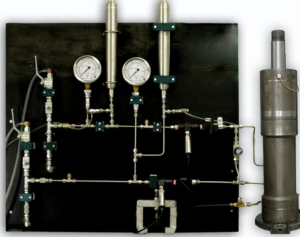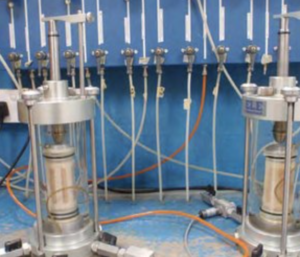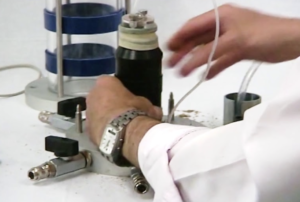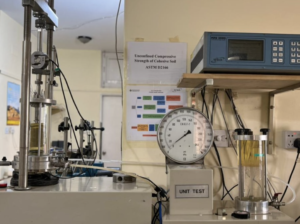Why Triaxial Saturators Are Essential for High-Quality Geotechnical Data
I’ve run enough triaxial tests to know this: great data starts with calm, repeatable saturation.
Quick takeaway: Triaxial saturators remove trapped air, stabilize pore pressure, and protect effective stress. That’s how CU/CD curves become clean, repeatable, and believable.
Here’s how I make saturation boring—and results beautiful.
Why Does Full Saturation Matter in Geotechnical Testing?
Air pretends to be stiffness. Full saturation exposes the soil’s real behavior, not the bubbles’ reaction.
In short: Replacing air with water raises B-value, reduces fake stiffness, and prevents noisy volume change—so modulus, strength, and k come from soil, not artifacts.
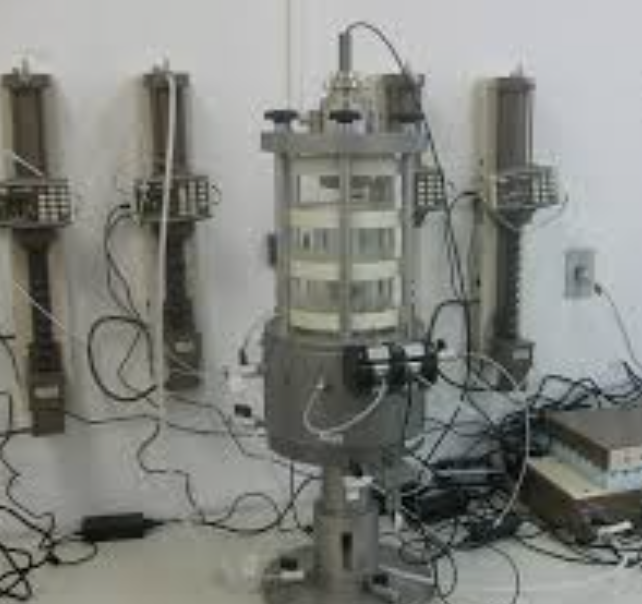
I still remember a late test where undrained clay1 looked “strong.” It wasn’t. Air in the system acted like tiny springs. After patient saturation—CO₂ flush, de-aired water, gentle back-pressure steps—the stress path settled down and the “strength” dropped to a believable value. That night taught me a simple truth: if saturation2 is sloppy, everything downstream drifts—Δu, ε_v, even calculated k. When saturation is steady, specimens behave like themselves.
What goes wrong without full saturation
- Fake stiffness: Air compresses, inflating E and G.
- Pore-pressure drift: Δu lags during CU; you chase phantom responses.
- Boundary leaks: Micro-leaks hide inside “normal” scatter.
- Scatter and re-tests: Parameters refuse to line up across specimens.
Quick fixes the saturator enables
| Problem | Symptom in plots | Saturator routine that helps |
|---|---|---|
| Residual air | Early steep stiffness, odd hysteresis | CO₂ → de-aired water, longer holds |
| Slow equalization | B stalls < 0.95 | Smaller steps, stone back-flush |
| Micro-leaks | Volume drift at low head | Hold tests, O-ring refresh |
| Inconsistent repeats | Parameter spread | Standard valve choreography |
Starter kit: Saturation SOP checklist • De-air workflow guide • Leak-hunt mini test card
How Do Triaxial Saturators Improve Effective Stress Control?
Effective stress is the truth of CU/CD. Saturators keep it tiny during saturation and predictable afterward.
Bottom line: Step back pressure while trimming cell pressure to hold σ′ ≈ 2–5 kPa. Pause, equalize, and only then consolidate.
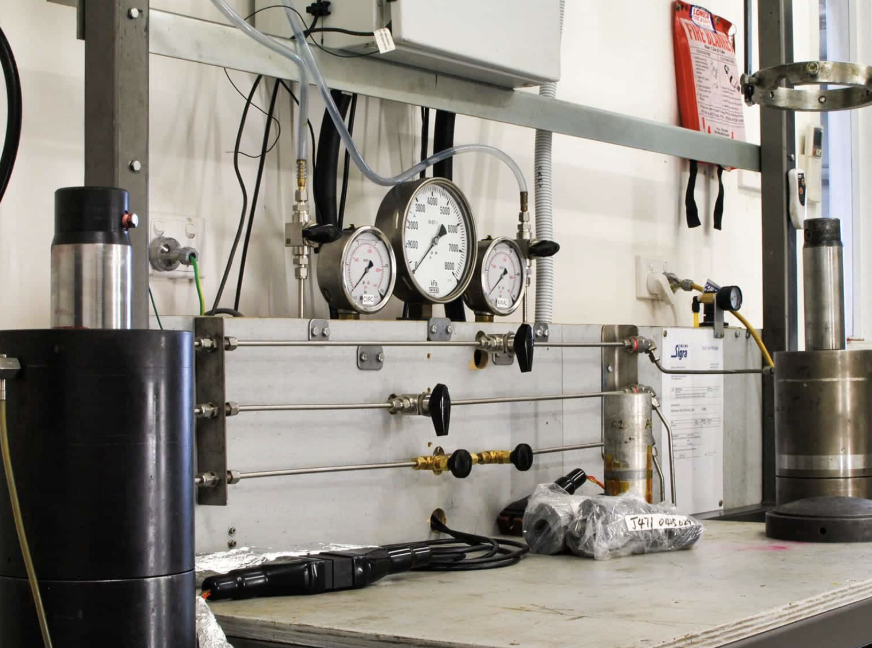
My loop is quiet and repeatable. I begin with a small confining pressure to seat the membrane and stones, then introduce back pressure3 in steps (50–100 kPa for clays; 25–50 kPa for sands). After each step, I lower cell pressure to keep σ′ near zero, run a short hold, and watch volume drift4. If drift is near zero, we’re good. If not, I clean lines, re-boil the porous stone, or swap a suspicious O-ring. This discipline stops swell in clays and fabric disturbance in sands.
A calm control loop
- Seat & check: 10–20 kPa cell pressure; leak hold.
- Start back pressure: keep σ′ ~ 2–5 kPa by trimming cell pressure.
- Equalize: short hold; log ΔV and time-to-B.
- Repeat steps until target B is reached; then consolidate.
CU vs. CD focus
| Mode | Saturator’s job | Why it matters |
|---|---|---|
| CU (Consolidated Undrained) | Remove residual air before undrained shear | Accurate Δu and strength |
| CD (Consolidated Drained) | Eliminate bubbles before long drainage | Reliable k, ε_v, drained modulus |
Tools I share with teams: Valve map one-pager • Step planner worksheet • Hold-test script template
What Role Do Saturators Play in B-Value Verification?
B-value is the truth test for saturation. The saturator makes B rise—and stay stable—so the check is boringly consistent.
Core idea: Apply a small cell-pressure pulse. B = Δu / Δσ₃. High B means water-filled pores and trustworthy effective stress.
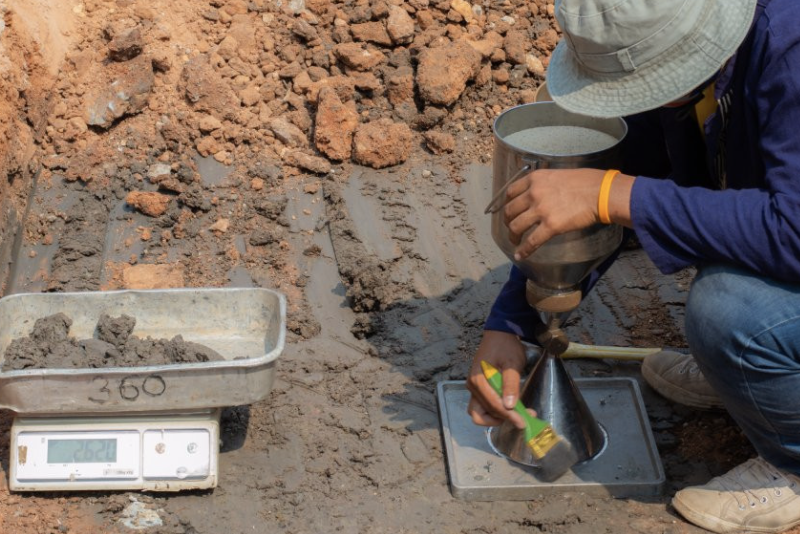
I treat B like a traffic light. Green (≥0.98)—proceed. Amber (0.95–0.98)—note and watch drift. Red (<0.95)—hold longer, re-flush stones/lines, and find leaks. I also care about the trend: if B improves with each hold, we’re on track; if it stalls, a tiny bubble or tired stone is probably in the system. Two pulses, same B? Good. Two pulses, falling B? Stop and fix.
B-check playbook
| B range | Meaning | Action |
|---|---|---|
| ≥ 0.98 | Excellent | Move ahead with confidence |
| 0.95–0.98 | Good | Proceed; log and monitor drift |
| 0.90–0.95 | Borderline | Extend holds; clean stones/lines |
| < 0.90 | Insufficient | Re-saturate; inspect seals and valves |
Helpful bits: Pulse-test card download • B-tracker sheet • Porous stone care guide
Why Are Saturators Critical for High-Quality Design Decisions?
Designs live on parameters. If saturation is tight, CU/CD parameters tighten—and risk gets priced right.
Short answer: Better saturation shrinks scatter, aligns models with reality, and reduces rework in excavations, foundations, tunnels, ports, and landfills.
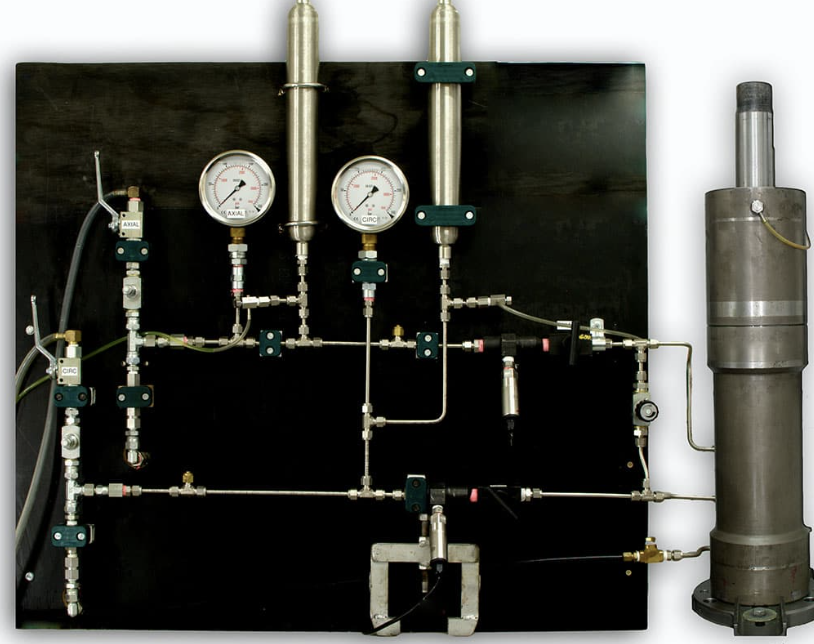
A memory: a contractor once questioned our wall design because the lab data wandered. We reran the program with stricter saturation holds5 and replaced one porous stone that “looked fine.” The next three CU tests lined up like rails. Same soil, same rig—better saturation. Suddenly, the wall embedment calculation6 stopped jumping, and the conversation moved from doubt to planning.
Where saturation pays off
| Decision | Parameter that stabilizes | What improves |
|---|---|---|
| Deep excavations | su, Δu (CU) | Wall embedment, strut forces |
| Rafts & piles | Drained modulus (CD) | Settlement predictions |
| Tunneling | Effective stress path | Face stability, support classes |
| Ports/coastal | k, drained stiffness | Dewatering and serviceability |
| Landfills/liners | k under low gradients | Leakage modeling |
Handy handovers: Lab-to-design checklist handout • Retest trigger matrix tool • Report legend one-pager
Conclusion
Make saturation calm and consistent; your CU/CD data tightens—and design decisions get safer, faster, clearer.
-
Understanding undrained clay is crucial for accurate soil behavior predictions in engineering projects. ↩
-
Exploring saturation’s impact on soil can enhance your knowledge of geotechnical stability and design. ↩
-
Understanding back pressure is crucial for effective soil testing and ensuring accurate results in geotechnical projects. ↩
-
Exploring volume drift can help you identify issues in soil behavior and improve testing accuracy. ↩
-
Exploring saturation holds will enhance your knowledge of soil behavior and improve your construction practices. ↩
-
Understanding wall embedment calculation is crucial for ensuring structural integrity and safety in construction projects. ↩



